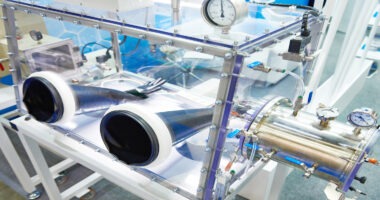The $62-Billion Marriage of Shire and Takeda: The Risks and Rewards
Having completed its $62-billion acquisition of Shire earlier this month (January 2019), Takeda President and CEO Christopher Weber will now lead a new Top 10 pharma company with annual revenues of $30-plus billion. The deal gives Takeda both reward—increased product diversification and a larger footprint in the US—but also risk—$30.85 billion in new borrowing to finance the deal.
Looking at a combined Takeda and Shire
Earlier this month (January 2019), Takeda Pharmaceutical completed its $62-billion acquisition of Shire, a deal announced in May 2018. The combined annual revenue of the company, exceeding $30 billion, is mainly derived from the key business areas of oncology, gastroenterology (GI), neuroscience, rare diseases, and plasma-derived therapies and also a position in vaccines. With the acquisition of Shire, Takeda gained complementary positions in GI and neuroscience and provided it with positions in rare diseases and plasma-derived therapies to complement its existing position in oncology, an area that Takeda enhanced with its $5.1-billion acquisition of Ariad Pharmaceuticals in 2017.
Takeda is gaining positions in rare diseases and plasma-derived therapies, a position that Shire strengthened through it $32-billion acquisition in 2016 of Baxalta, the biopharmaceutical company spun off from Baxter Healthcare. Across therapy areas, rare diseases represent Shire’s main strategic focus. In 2017, its Rare Disease Division accounted for approximately $11 billion in revenues or approximately 72% of the company’s total revenues. Seventy percent (70%) of Shire’s clinical programs are focused on rare diseases based on its 2017 filings. Shire’s Neuroscience Division had revenues of approximately $4 billion in 2017.
Overall, in 2017, Shire recorded total revenues of $15.2 billion, which included product sales of $14.4 billion ($7.4 billion from Shire products and $7.0 billion from Baxalta products). Immunology was Shire’s largest therapy area with 2017 revenues of $4.370 billion and is one of five therapeutic franchises from Shire with sales in excess of $1 billion. The others, based on 2017 revenues, are: hematology ($3.786 billion), neuroscience ($2.664 billion), internal medicine ($1.670 billion), and genetic diseases ($1.438 billion).
Shire’s other therapy areas are oncology, which had 2017 revenues of $262 million, and ophthalmics with revenues of $259 million. On a pipeline basis, as of year-end 2017, Shire had eight drugs in registration and 15 therapies in Phase III development, 10 in Phase II, and seven in Phase I development. It had 35-plus therapies in preclinical development.
Oncology will continue to be a focus of Takeda. With the Ariad acquisition, Takeda gained the anti-cancer drug, Alunbrig (brigatinib) for treating anaplastic lymphoma kinase-positive (ALK+) metastatic non-small cell lung cancer. At the time of the acquisition in 2017, Takeda said that the drug has the potential to reach peak annual sales of more than $1 billion. Alunbrig was approved by the US Food and Drug Administration in 2017 and a marketing authorization application was submitted to the European Medicines Agency in February 2017. In addition, with the Ariad acquisition, Takeda gained another targeted rare-cancer therapy, Iclusig (ponatinib), a commercialized leukemia drug, and a pipeline that includes targeted kinase inhibitors as well as Ariad’s translational science-based research and development platform.
Geographic diversification
Takeda is also gaining geographic diversification, particularly in the US, with its acquisition of Shire. Nearly two-thirds (64%) of Shire’s 2017 revenues of $15.2 billion were from the US; the remaining 36% was in international markets. Takeda had 34% of its 2017 revenues from Japan, 34% from the US, 17% from Europe and Canada, and 16% from emerging markets. A combined Shire/Takeda on a pro forma revenue basis would have 48% of its revenues from the US, 33% from international markets, and 19% from Japan.
On a labor basis, Shire had 23,044 employees as of year-end 2017 with 57% of those employees in the US and 36% in Europe. The balance of employees are based in Asia (5%) and Latin America (2%). Shire is headquartered in Dublin, Ireland with a R&D hub in Boston and an international hub in Switzerland.
Cost synergies and financing
Takeda says it expects to achieve recurring pre-tax synergies of at least $1.4 billion annually by the end of the third fiscal year following the completion of the Shire acquisition, originating from efficiencies in the combined company’s sales, marketing and administrative functions, research and development efforts, and product manufacturing and supply, according to the company’s amended annual filing with the US Securities and Exchange Commission as of December 17, 2018, and will required approximately $2.4 billion to implement.The company is also said to be evaluating divestment of non-core assets as it evaluates the portfolios of the combined company
For Takeda’s Weber, the Shire acquisition puts the company into uncharted territory. It makes Takeda the first Japanese pharmaceutical company to rank among the top 10 pharmaceutical companies with revenues exceeding $30 billion. It also represents the largest-ever foreign takeover by a Japanese company, but it also comes with a large debt load. At the time of the announced acquisition in May 2018, Takeda said it would finance the deal with a new bridge credit agreement of $30.85 billion.





